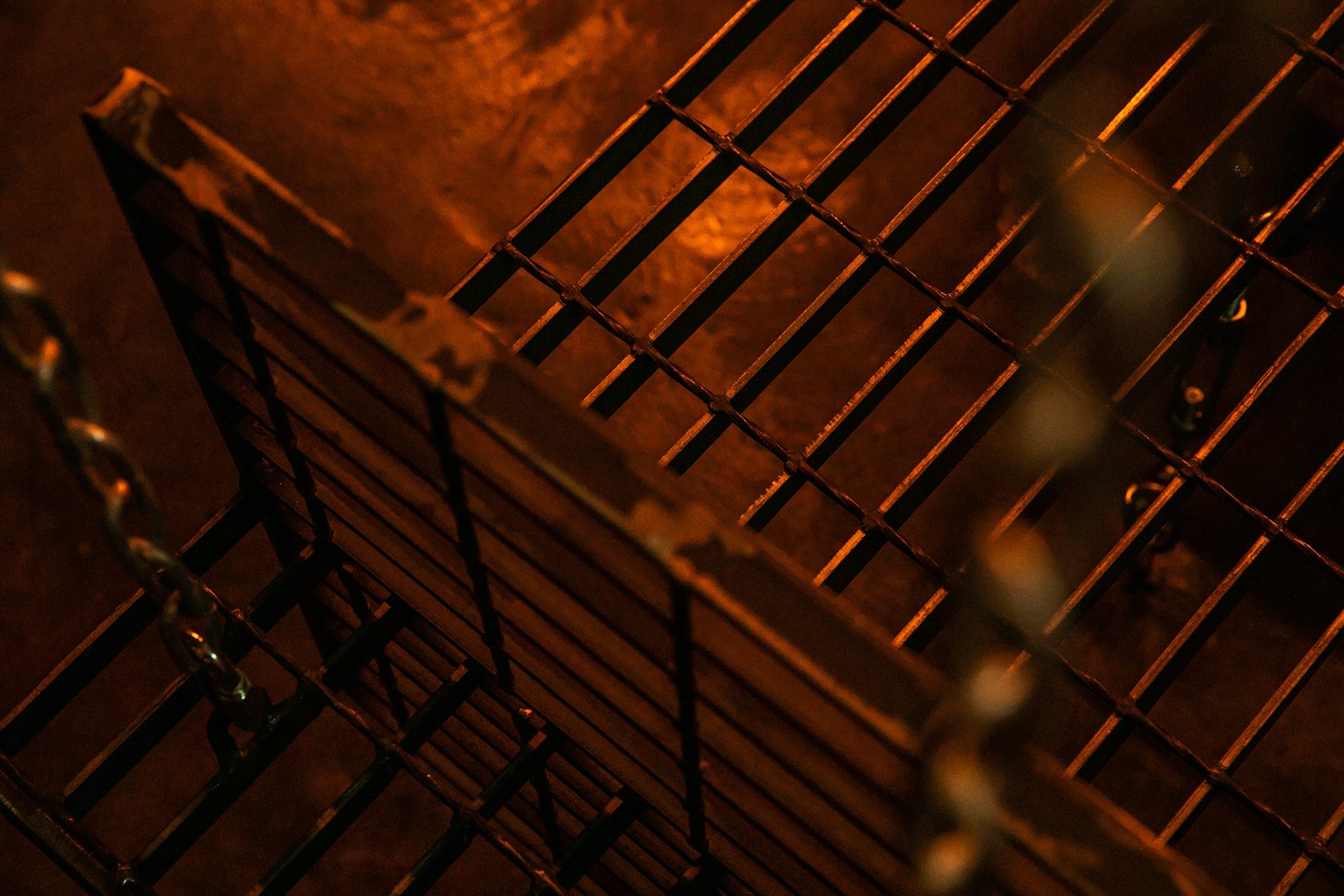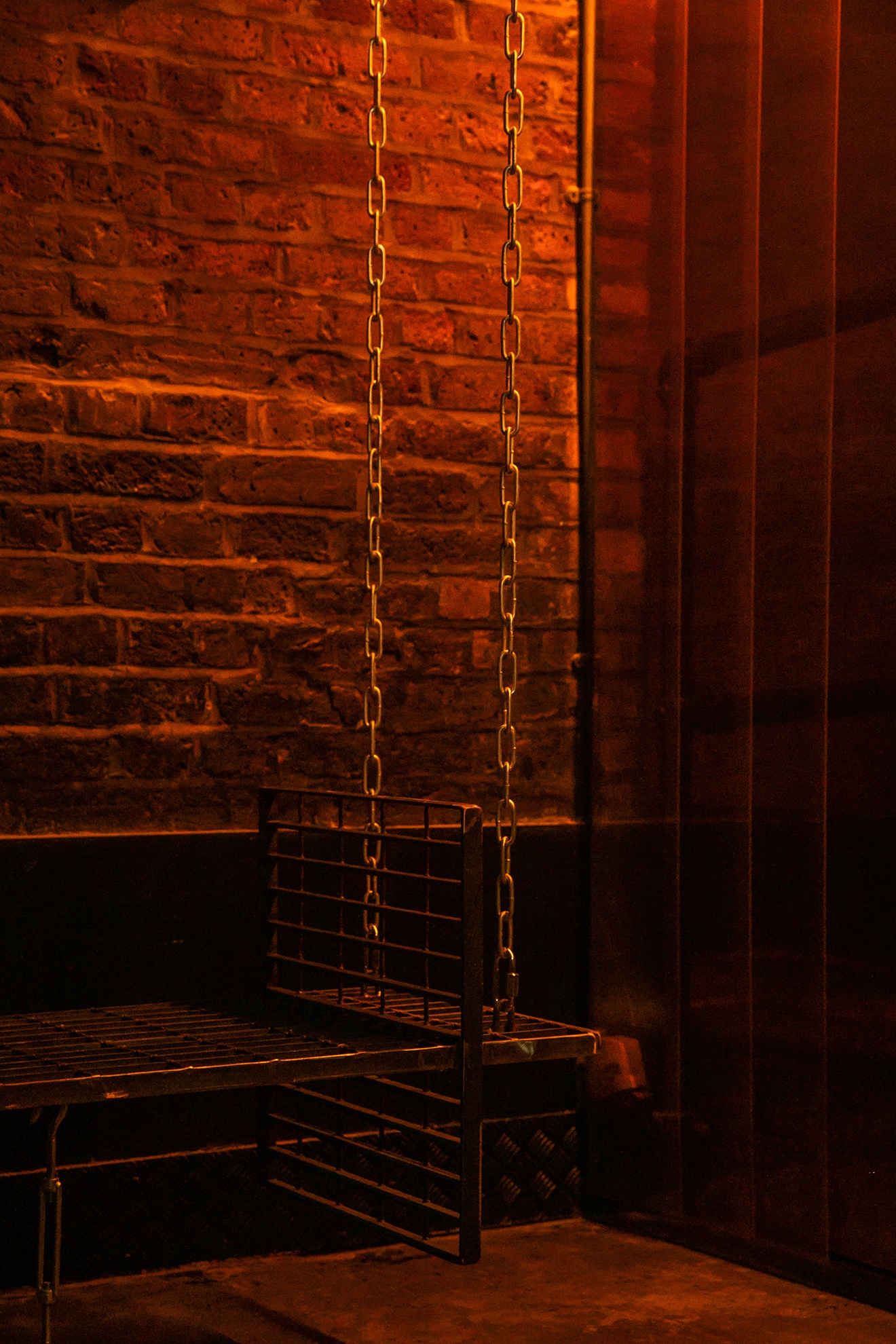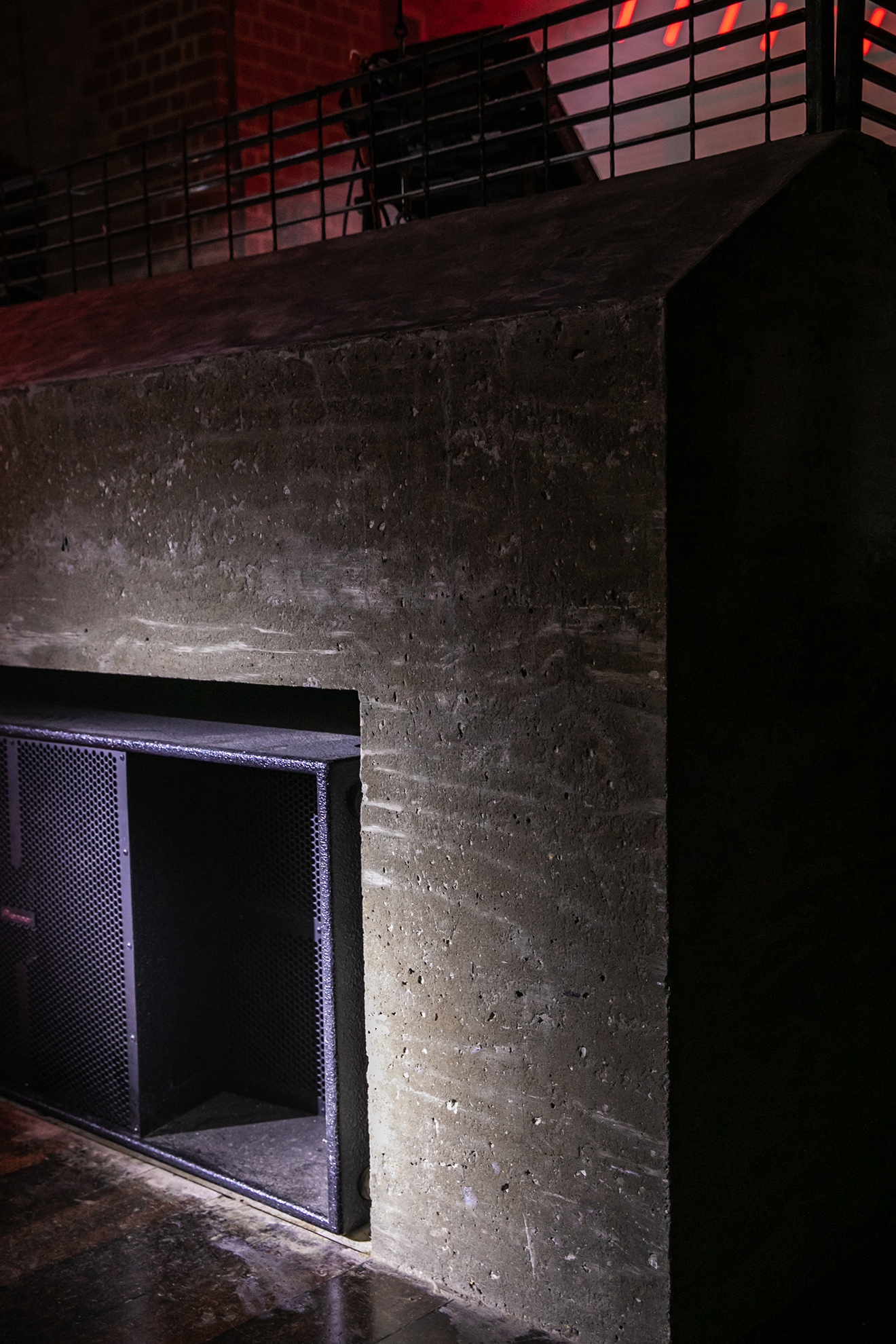 Features
Features
Fabric co-founder: "The club feels like a time warp - there isn't a phone in sight"
Safi Bugel speaks to fabric co-founder Cameron Leslie about the club's first major refurb since 1999 and his "incredibly positive" thoughts on the future of clubbing
Following 16 months of closure due to the pandemic and the accompanying government regulations, the team behind the legendary club fabric have been afforded time to introspect, and to make some long anticipated changes.
Since clubbers left the venue in March 2020, fabric has seen its first major refurbishment. The space has been transformed, from a relocation of the booth in Room 2 to an overhaul of the soundsystem across the venue.
Working with architect Giorgio Badalacchi, the fabric team have drawn on the heritage of the East London club and its surroundings. The Sunken Bar, for example, welcomes new chain-swing seats replacing the iconic beds, as well a butcher-style curtain - a nod to the venue’s former capacity as a meat factory.
Read this next: Review: "A religious experience" - the return of clubbing in London
Along with both the technical and design changes, the fabric team have made efforts to enrich the overall clubbing experience, such as reintroducing the photography ban, bringing in a new team and updating the music policy.
They hope that the changes made over the last year and a half will usher in a bright future for the club, as well as for the scene more generally.
Read our Q&A with fabric’s Managing Director and Co-Founder Cameron Leslie below.

The club’s just seen its first major refurb since it opened in 1999- what prompted the change?
It was prompted by the fact we haven’t ever had a window of opportunity like this. Most of the time, from Monday morning to Friday evening is the window to be able to do anything in so we’re obviously super limited by what we can do, and if we were to shut any part of the venue down for an extended period, the cost of that refurb would just be absolutely astronomical. So it’s really the first time in 22 years, and we just decided it was gonna be really important to grab that opportunity to do somewhere we may never get the chance to do again.
Did you have any reservations about going ahead with such a big refurb, including the removal of iconic features in the space?
No, not really. With the areas we felt we had to change, the decisions were already made. If there was anything we needed to change as a consequence, it was with something else in mind, something better going forward. I think it’s important that we try to update the space, take the space forwards a bit yet still retain— if anything, bring to the fore— a lot of the features of the fabric of the building.
We wanted to stop hiding some of the things, layers that had been added on over the years. To bring those sort of things out has been the real focus of this. If iconic things that have been important along the way have been moved to one side as a consequence, there’s been thought in mind with that.
You worked with architect Giorgio Badalacchi to make the changes- why did this collaboration make sense for fabric?
Giorgio has been a friend of the venue’s for a while. We really like his ideas and the work he’s done. We felt there was a lot of sympathy in his ideas for the heritage and characteristics of the space. But we also felt he had some really adventurous ideas as to where we could move things on a bit; it was perfectly in keeping with our own ideas of what we wanted with the space. But for him to actually realise was perfect for us. The ideas we were planting and he was coming back to us with were perfectly on point.
Read this next: Fabric receives £1.5m of government funding
Can you tell me about the influence of context on the refurb? It seems as though you’ve been inspired by the city itself with the use of concrete and also the heritage of the space itself.
It’s a very industrial space. It’s intended to be more of a timeless space. I think the things that we took out were taken out because they weren't damaged and they stood the test of time. To be there for well over two decades in a place like fabric where you have hundreds and hundreds of thousands of people every year— millions of people over the lifespan— absolutely going for it, everything there has withstood that and shown why it was the right decision to put those sorts of thing there in the first place. So what we have decided to go on with is only really an extension of where we’ve been already, but we wanted to do it in a slightly different format. Some of the things we’ve taken influence from over the years and not had the opportunity to put those in place, we’ve had this melting pot of ideas. And I suppose this was the opportunity to put all those [ideas] down and try and do as much as we possibly could.
You’ve made changes to the position of the booth in Room 2- what impact do you hope this will have on the environment of the club, for both DJs and partygoers?
Where the DJ was located before, up on the wing at the side, wasn’t always perfect: because of the symmetry of the room, the direction of where people were and the way that the DJ was slightly disconnected from the crowd. We felt that this was a good opportunity for us to centralise the room, to get the DJ booth right there in the middle line of the room by the stage, with the crowd being able to be round the back and to the side. They’re right in the bear pit, as we call it. We were thinking of how to connect the crowd and the artist in a much better way and already its proven in the couple of weekends we’ve seen it in operation, it's a completely different atmosphere. It’s for individuals to make their own mind up, but certainly from what we’ve seen already and the feedback we’ve had from artists and the crowd alike, they’re absolutely loving it.

Have there been any changes from a sound perspective?
Yep, we’ve completely rebuilt the system in Room 1, it’s sounding absolutely super crisp now. We’ve upgraded the engine underneath and we’ve completely rebuilt and rewired the room. For example, every speaker now has its own amp channel, all the subs have got different outputs that are paired with the other elements of the system, there’s now a time delay control off the subs so they arrive at the centre coherently without any sort of acoustic cancellation. We've done a fairly similar thing in Room 2 with centralisation: we’ve moved a number of things around and have added quite a bit of new kit in there as well. Room 1 and 2 are sounding the best I’ve heard them for a long, long time.
You’ve recently introduced a photography ban - what prompted this and what do you hope it will achieve?
We haven't necessarily introduced it, we've re-introduced it. Because when we started the club back in 1999, obviously camera phones weren't a thing, but we did have a photography ban in place there. For many years, if you look through our archives and files, we have huge dark periods of no photographic evidence of some of the acts, artists and goings on there at the club. We wanted to keep that place special and intimate and private. What goes on in the club can only be felt when you're actually there; we wanted to make sure people aren't getting lost on phones when they should really be thinking about the moment they're in there.
Read this next: The 10 best fabric mix CDs
Have you felt a change in the club since reintroducing the ban?
Definitely. And I think, more importantly, the amount of feedback we've had on this from people coming down and saying what a difference it makes, artists in the booth saying just how brilliant it is not having camera phones being waved up there. And you can see it: you can stand there and look at the dancefloor and it’s like a time warp — it feels like you're back in 1999-2000 time when people weren't standing there with phones in the air because there isn't a phone in sight. I think that's a really good thing, and people have really embraced it.
You've recently got Jorge Nieto, the creative director of EartH and Village Underground, on board. What will he bring to fabric?
We’ve looked to really add Jorge’s depth and breadth into the team. He is a really talented guy who doesn't have just one strong niche, so having him coming into the team, as well as altering the team with quite a lot of other new faces as well, we feel we've added some real firepower into our existing booking and creative team. We're gonna start with just getting the venue up and going, getting that buzzing in the way we want it to. And then hopefully we'll start to see some of the ideas we've been talking about beyond come to fruition.
Do you think the perspective of someone who has worked with smaller venues before will be beneficial to fabric?
I think when you look at the size of the shows he was booking, you couldn't say they were small - they were decent sized. fabric is a collection of smaller spaces; added together its larger, but actually its how those individual smaller spaces which are of a similar size work together within the programming and curation. So he's taken to it perfectly and he's brought something special to the group.

What other changes have been made to the club?
There’s been some changes to music policy. We have got a real focus on FABRICLIVE, really bringing that back into the foreground. We've got a young, fresh, super talented team now on FABRICLIVE. Coupled with the veteran experience we've got in the team, I think we're going to be delivering some great, broad, genre-bending stuff again, which I’m super excited about.
We've already had our first 24 hour event on the opening weekend and we're going to be doing a lot more of those, not just on the opening weekend or the birthday; we're making that quite an important format that we want to take forward on a regular basis.
One of the other things is the Saturdays. We’re going to be doubling down on some of the things we absolutely love about Saturday nights - the focus on techno is going to be much more strong for us.
How did it feel to be the Director of a club during 16 months or so of closure - did you fear for the club's future?
It has been a collection of phases— when you're in each of those, you really don't know what the next stage will be. We had no control over it. We were completely and utterly helpless in a situation that didn't just encompass us or the whole sector, it encompassed literally the whole world. There were plenty of times during the past 16 months where I could literally make a case for nightclubs never reopening ever again, or fabric never opening for the purpose for which it closed. At that point, pre- any knowledge of vaccines, you could not see any end date in sight. That was really, really tough. There was considerable cash burn, even with as much of the cash taps turned off as possible, for a venue like this in central London, from being moth-balled to maintaining the equipment and having the site looked after. At so many points, pre-furlough, pre- any kind of knowledge of what support there was going to be — and it transpired that there really wasn't any kind of sector-specific support towards our industry, we were the first to close and the last to reopen. So it really has been a brutal 16 months and not a period I’d ever want to relive, that's for sure.
Read this next: How to help clubs reopen safely and for the long haul
Do you think there's been a new energy in the place since reopening?
100%. That was always the intention: we wanted to make sure that when we were allowed to reopen, we did so properly on the front foot. So with getting all the new things in place and really getting it out there, it’s already buzzing. I’m so delighted with the hard work that everybody's put in in the last few months to get to this point.
What do you think the impact of the pandemic will be on the club scene more generally, namely smaller clubs and independent venues?
As much as I am quite frustrated about a lot of the things that have gone on in the last 16 months, and how the sector was left to bear the brunt of it— I feel very frustrated at a lot of the decisions and the rhetoric that has come out towards the night-time economy by the government— I am incredibly positive about the future. Now that we're actually seeing things in action, I think there is an incredible energy and positivity for people going out. I think that has rekindled people's desire to live in these kind of moments and to go to venues like ours, like others, and enjoy live experiences that they haven't been able to for such a long time. People have hopefully realised how important those sorts of things are in life.
I’m really positive and upbeat about what that can lead to and where this is going to go. For a city like ours, some of the best periods I can think back to for fabric were when we had the most clubs in England. It wasn't that we were the only venue in town, it was actually that there was such a broad, diverse collection of venues that made this a real global city to go out in. And I think there's a really strong opportunity for ourselves to start seeing new smaller, mid-size venues popping up, which will complement the way people go out and people's desire to go to different places and see different things. I think there is every opportunity on the other side of this, with property and rent, for things to move away from more traditional sites. We’ll start to see some real young, new, fresh stuff appearing.
So, both from a fabric perspective and a macro-scene industry perspective, I’m really optimistic about where this could go. I think we're going to potentially have six months of it being a little bit choppy, but hopefully next year and beyond… I'm really, really positive about it.
Safi Bugel is Mixmag's Digital Intern, follow her on Twitter


